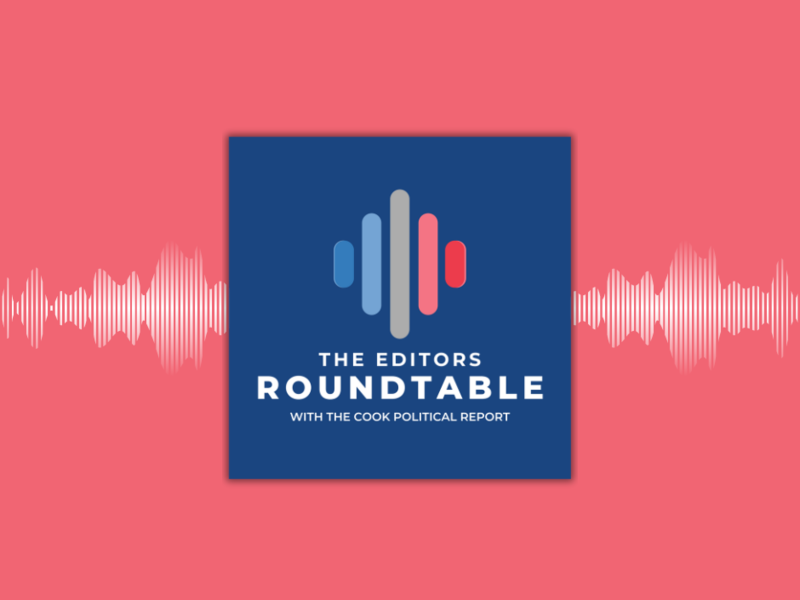
In politics, as in weather, there can be a sudden change in the prevailing winds. Take the last three weeks before November’s elections, when a narrow but pivotal slice of voters, mostly independents, got cold feet about giving Democrats the big win that had appeared to be almost certain. Perhaps becaus of latent concerns about “democratic socialism” and a slew of progressive priorities that Democrats talked up during the primary season, voters delivered Democrats the unified government they craved, but only by the tiniest of margins.
More often, however, the weather patterns shift gradually, like a change of seasons. A handful of factors develop that can be potentially decisive.
On this, the 99th day of Joe Biden’s presidency, as we review his 106-minute address to Congress last night and ponder how his ambitious domestic agenda will play in next year’s midterm elections, we can come up with a list of such factors, even if we don’t yet know the outcome to which they’ll point.
1. The narrow congressional majorities
The most obvious arguments for Republicans winning House and/or Senate majorities are the narrow margins in the two chambers, currently six seats in the former, one seat in the latter. Post-World War II, the president's party has averaged a three-seat average Senate loss and a 22-seat loss in the House. In first-term midterms, those Senate losses swell to an average of seven seats.
2. House reapportionment and redistricting
On the former, the states that Biden carried will lose three seats; those that Trump carried will gain three. With only a six-seat margin today, that is a big deal. On the latter, while Republicans will not be able to dominate the mapmaking process as much as they did a decade ago, they will nonetheless have the pen in hand to draw the maps in states with 188 congressional seats. Democrats will control just 73 districts. The best argument to be made for Democrats in the House is that since they lost 11 seats last year, their exposure is light, only seven Democrats holding seats in districts that Trump won. One law of politics that can be counted upon is that a party cannot lose a seat they don’t hold.
3. Republican exposure in the Senate
Republicans will have to defend 20 seats, compared to Democrats’ 14. Republicans also have five open seats among their 20, which are usually harder to defend than incumbent seats. Democrats have none.
4. Partisan voting patterns
If we focus on states that are inherently competitive, based on presidential voting patterns, the outlook seems closer to a draw. Democrats have four seats up in states with The Cook Political Report Partisan Voting Index of 3 points or less, meaning that the state's vote margin is within 3 points of the national average. Republicans have five such seats. Of course, with only a single-seat margin, Democrats cannot afford any net loss at all.
5. Wild-card candidates
Democrats are hoping that former President Trump and his supporters will pick fights with GOP incumbents, potentially nominating candidates who may have significant weaknesses going into a competitive general election. In 2010, Rep. Mike Castle, who would have been a general-election favorite, was upset in a Senate open-seat primary in Delaware by Christine O’Donnell, effectively sealing the win of Democrat Chris Coons. My guess is that Coons would have eventually ended up in the Senate anyway, but it would have come during another year. Two years later, a pair of exotic Republicans won primaries only to lose races that the GOP should have won—in Indiana, Richard Mourdock unseated incumbent Richard Lugar in the primary and went on to lose to Joe Donnelly in November, and Todd Akin in Missouri went on to lose to Democratic incumbent Claire McCaskill, who would have been an underdog to most other GOP candidates that year.
6. Turnout
In 2018 and 2020, turnout was higher than it had been in 100-plus years. The reason for both: Donald Trump. He inspired an enormous turnout among Trump Lovers and Trump Loathers alike. Midterm elections always have a lower turnout than presidential years (although 2018 wasn’t that much lower than 2016), but the question is which group will suffer the greater decrease in voters, the lovers or the loathers? With fewer independents voting in midterm elections, partisans become even more important









Subscribe Today
Our subscribers have first access to individual race pages for each House, Senate and Governors race, which will include race ratings (each race is rated on a seven-point scale) and a narrative analysis pertaining to that race.